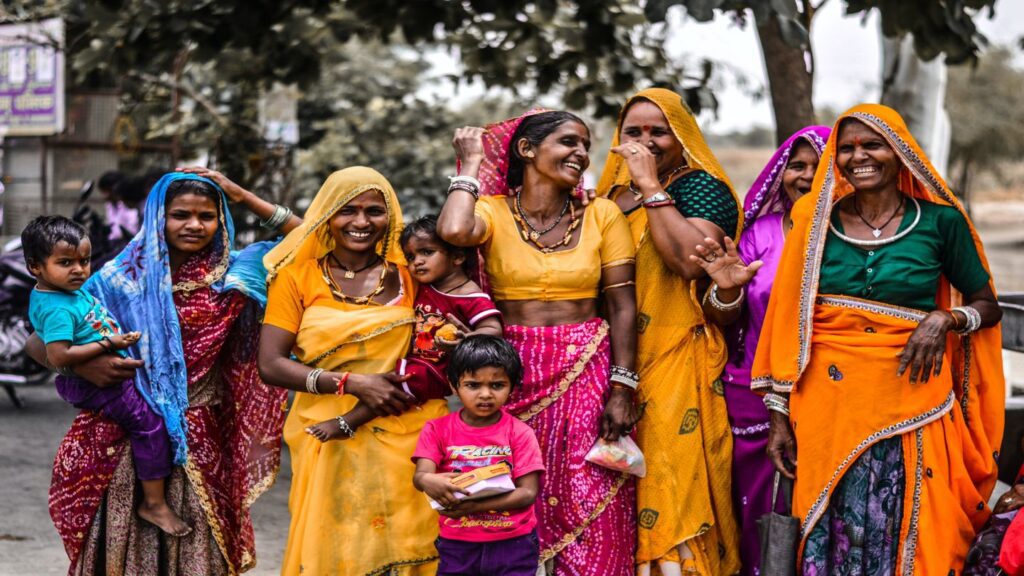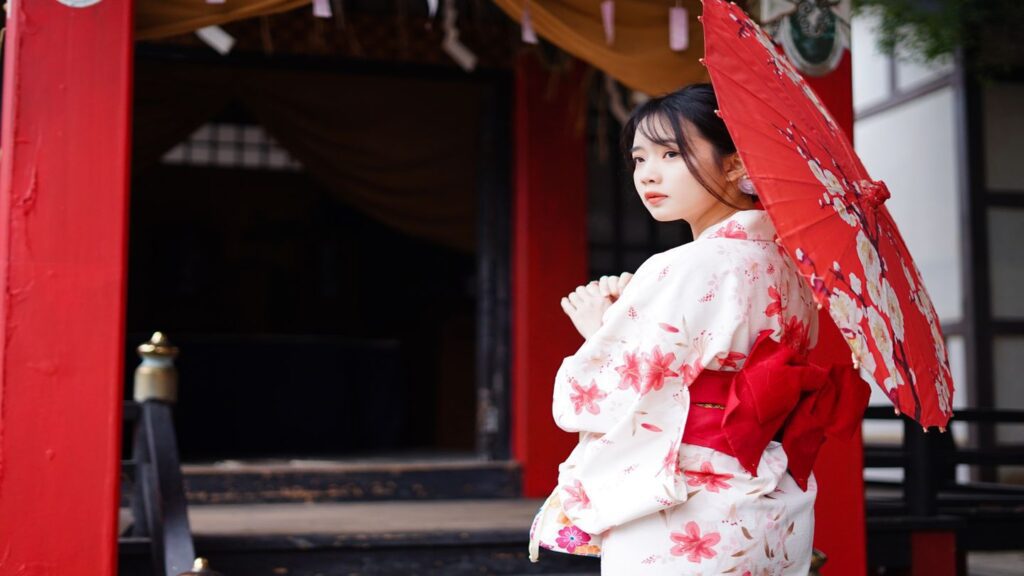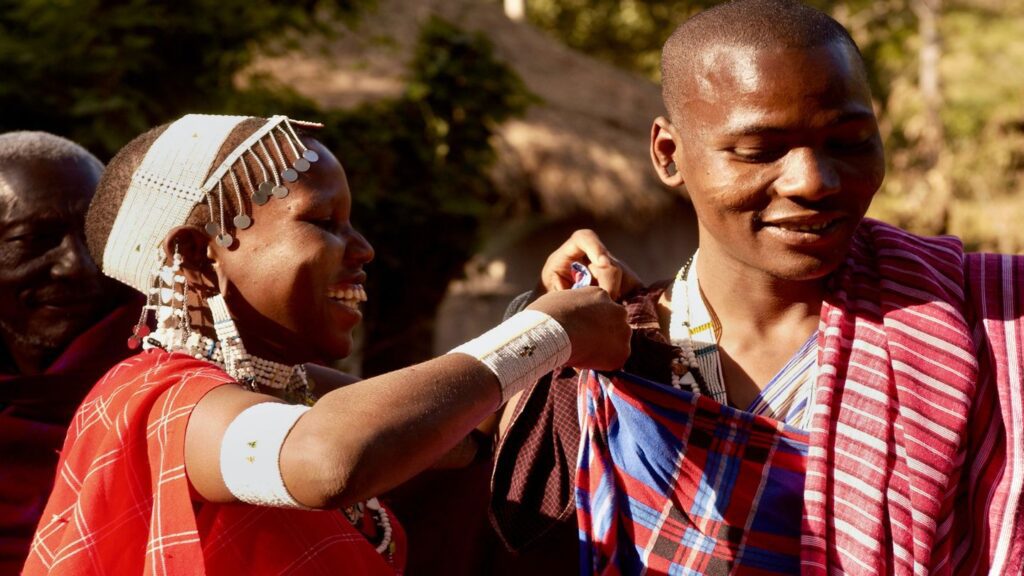Recently updated on July 5th, 2023 at 02:19 pm
What we wear is more than just pieces of fabric. People all over the world dress to express themselves and traditional clothing can symbolise history, cultures, and identities. Different designs, colours and patterns can tell an incredible story, show unity, celebrate important events, and preserve cultural heritage. From the Indian sari and the Japanese kimono to the Guatemalan traje and Scottish kilts, here is how different cultures use clothing as a means of expression.
India


India is home to dozens of different cultures and communities, each with its own types of dress to express themselves. You’ll find lots of colourful outfits, like the sari and salwar kameez for women, or the dhoti and bandhgala for men. The sari is probably the most famous traditional attire in India and can have many meanings. In some regions, brides wear red saris at their weddings, while mothers wear yellow saris for seven days after the birth of their child. Saris can be a sentimental piece, passed down through the generations, or they can be everyday clothing.
If you head to Nagaland in Northern India in December, you can witness the unique Hornbill Festival. Each of the Nagaland tribes comes to the festival to show off their incredible fashion, from stunning Naga shawls to spectacular headdresses, made up of dyed goat furs, boar tusks, and feathers.
RELATED CONTENT: 9 reasons why you’ll fall in love with the culture in India
South Africa
The Xhosa people are an ethnic group in Southern Africa, famed for their intricate beaded regalia. Women wear beautiful skirts (imibhaco), long tops (incebetha), and headpieces (iqhiya) with beaded designs. The designs are mesmerising, but there’s more to them just than stunning colours and patterns. Each outfit has a different shape and style depending on the occasion and the person wearing it. Different designs symbolise a person’s identity, social status, marital status, age, and whether they are a mother. Xhosa men and women often wear this clothing for special celebrations and it’s a gorgeous way to dress to express themselves.
RELATED CONTENT: 11 bucket list experiences you can only do in South Africa
Japan


In Japan, the kimono is the ultimate traditional dress to express culture. Kimonos became a symbol of Japanese culture from the 17th century, and were worn by both men and women. Today, it’s synonymous with respect and politeness, worn during special celebrations, such as weddings, funerals and festivals. Kimonos are adorned in symbolic colours and images that have various meanings. For example, a crane represents good fortune and longevity because of its mythical life span of a thousand years.
RELATED CONTENT: From samurai to sakura, where to go and what to do in Japan
Kenya


The Maasai people in Kenya may be a small ethnic group, but they’re one of the most globally recognised communities, thanks to their brilliant traditional clothing. Maasai craftsmanship is renowned for its bright fabrics, bride collars, intricate beadwork, and ochre-dyed hair.
One of the most famous pieces is the shúkà, which are traditionally wrapped around the body. The shúkà is used by the Maasai to both express their culture and protect them from harsh terrains and climates. Garments are often red in colour, to symbolise courage and unity, or blue, to represent the sky. The Maasai also wear different clothing for special ceremonies. For example, Maasai warriors wear a lion’s mane headdress to the eunoto ceremony to show their success after their most demanding test – stalking and killing a lion with only a spear.
RELATED CONTENT: Life in the Maasai Mara: 5 things you didn’t know about this extraordinary culture
Scotland


When you think of traditional Scottish clothing, you probably imagine the kilt! This classic garment of the Scots was first worn back in the 16th century by natives of the Scottish Highlands… And the tradition is still thriving today. Kilts are usually for ceremonies and festivities, such as the Scottish Highland Games, where everyone from bagpipe players to caber tossers dons a kilt. But the kilts are more than just a stylish fashion statement. The kilt tartan colours represent many things from their parent clan to the occasion. So next time you see a Scot dressed in a tartan kilt, you’ll know they’re dressing to express centuries of Gaelic customs.
RELATED CONTENT: 7 Scotland travel experiences you can enjoy with Trafalgar
Guatemala
The Indigenous Mayan culture in Guatemala has a huge influence on the way locals dress to express themselves. Mayan people often wear traje (traditional clothing), which for women includes corte (skirt), hupil (square-cut top), and a belt (faja). Men wear a traditional chaqueta (jacket). While traje is for special ceremonial occasions, many people in Guatemala wear traje to go about their daily life. They wear different designs, colours, and embellishments to symbolise their unique Mayan group, history and culture.
Head to Todos Santos Cuchumatán, and you’ll see men wearing bright red-and-white striped trousers, embroidered shirts, black woollen breeches, and straw hats. Or visit the cooler areas like Santiago Attilan and you’ll see women wearing handmade cotton blouses in colourful patterns.
RELATED CONTENT: 9 Trafalgar Be My Guest experiences that celebrate cultural diversity
Nigeria
The Yoruba people of Nigeria are renowned for wearing bright, beautiful clothing to express themselves. They wear all kinds of traditional clothing, such as Asoebi – the ‘family cloth’ ( ‘Aso’ means cloth and ‘ebi’ means family). When a group of people, usually a family, wears Asoebi, they all wear the same colourful fabrics to indicate solidarity and camaraderie during celebrations like weddings.
Yoruba people also wear the iconic vibrant Aso-oke, an intricate, hand-woven fabric used for the traditional agbada for men and the iborun, buba, iro, and gele for women. The fabrics come in diverse colours and patterns and also reflect individual and community style.
How do you dress to express yourself and your culture? Let us know in the comments below!